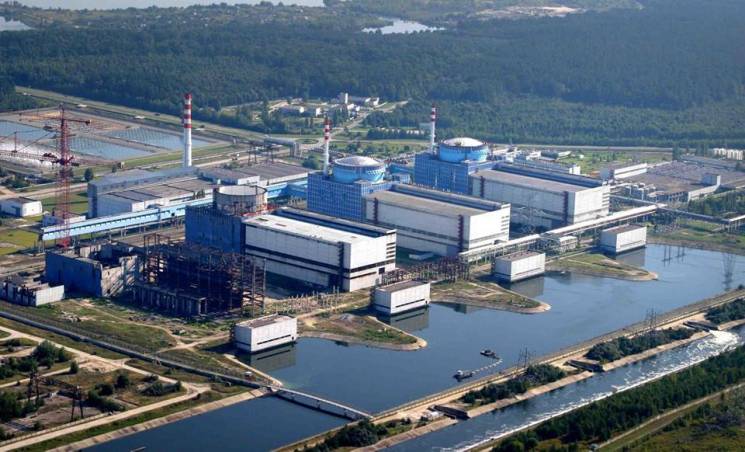Completion of Khmelnytskyi NPP Units: What New Opportunities for Business and Economy
19 February 14:35
The completion of power units 3 and 4 at Khmelnytsky Nuclear Power Plant is not only a strategic step towards Ukraine’s energy independence, but also a significant contribution to the development of the region’s economy and the country as a whole. This was reported by "Komersant Ukrainian" with reference to the press service of Energoatom.
The project will create thousands of new jobs, which, in turn, will be a powerful incentive for small and medium-sized businesses, increase community incomes and attract new investments.
According to Energoatom’s press service, the number of open positions will increase consumer demand, which will stimulate business development in the satellite town of the nuclear power plant.
New jobs are a driver of economic growth
The construction and commissioning of two new power units will create a large number of vacancies in various fields:
- Construction industry – hiring specialists to erect structures, install equipment and provide infrastructure.
- Nuclear energy – opening new positions for engineers, technicians, operators and safety specialists.
- Related industries include personnel services, logistics, catering, and services.
Experts estimate that each job in the industry creates 2-3 additional jobs in trade, education, transportation, and services. Thus, the construction of power units will have a multiplier effect on the regional economy.
How will this affect business?
An increase in the number of employed people will increase their purchasing power. This will open up new opportunities for entrepreneurs in the following areas:
- Trade – increased demand for food, household goods, and electronics.
- Real estate – increased demand for housing, leased premises and commercial real estate.
- Transportation and logistics – expansion of routes and increased demand for passenger transportation.
In addition, the active development of the business environment will increase tax revenues to local budgets, which will allow them to allocate funds for infrastructure, social programs and the development of the satellite city of Khmelnytskyi NPP.
“The growth of business activity will provide additional tax revenues to local budgets, which will allow the development of cities within the 30-kilometer zone of Khmelnytsky NPP,” Energoatom said.
Completion of two KhNPP units
According to Nashi Hroshi, Bulgaria bought these reactors from Russia for the Belene NPP for about $600 million (in equivalent). However, financial consultants from Mazars reassessed the price, and the price for the sale of the reactors to Ukraine was raised to $1.1 billion.
Ukraine completely refused to cooperate with Rosatom after the outbreak of a full-scale war, terminating all agreements with the Russian side in the nuclear sector, spravdi writes.
Instead, direct commercial negotiations are underway with the Bulgarian government to purchase equipment and reactors from the Belene NPP, which is owned by the Bulgarian state energy company Natsionalna Elektricheska Kompania EAD.
MPs also criticized that the draft law on the construction of the units contained outdated documentation and calculations. In February, it became known that Energoatom had ordered a recalculation of the estimate for the construction of new units.
At the same time, President of Ukraine Volodymyr Zelenskyy publicly supported the project to complete the Khmelnytskyi NPP and asked the Verkhovna Rada to vote for the necessary draft laws.
He also noted that the IAEA Director had supported Ukraine’s strategy to complete the nuclear units at Khmelnytskyi NPP and thanked him for his support.
Environmental activists opposed the completion of the units, while other critics pointed to the timing of these projects during the war.
In April 2024, the government nevertheless approved a bill to complete the third and fourth power units at KhNPP. The document was submitted to the parliament, but it was voted down several times.
EU Ambassador to Ukraine Katarina Mathernova also said that the European Union would not finance the completion of KhNPP units, as the bill was drafted without consulting the EU.
Energy Minister Herman Halushchenko said that it is possible to complete the third power unit of the KhNPP in three years. He explained that the completion of the nuclear power plant would require loans.
Inna Sovsun, MP and member of the Energy Committee, stated that the proposal to complete the power units at KhNPP was inadequate.
Director of the Energy Research Center Oleksandr Kharchenko said that the money allocated for the completion of power units at KhNPP would be “buried for nothing, without any prospects”.
Khmelnytsky NPP is located on the border of three regions: Khmelnytsky, Rivne and Ternopil. Construction began in 1981, and it currently has two reactors. The first was launched in 1987, the second in 2004. Both power units have VVER-1000 reactors with a total capacity of 2000 MW.
According to the project, the plant is supposed to be a four-unit power plant, but the third and fourth power units have been only partially built. “Energoatom plans to complete the construction of two VVER-1000 power units and build two more powerful power units using the American AP1000 technology, which will be able to produce up to 1200 MW. If these plans are realized, the total capacity of Khmelnytsky NPP will exceed 6,000 MW and it will become the largest in Europe.
Last year, Energoatom spent 58% of its net income on PSO payments.









